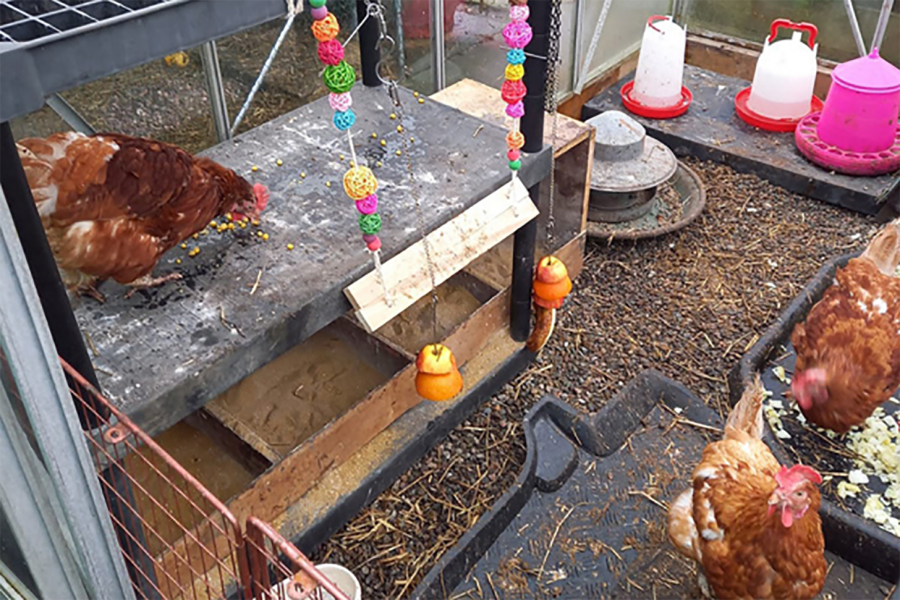As winter brings rain… and mud… the British Hen Welfare Trust advises on how to keep your hens’ run clean this winter…
Winter has arrived and with it comes the inevitable wet weather. A little rain is fine, but downpours lead to mud – which means a muddy chicken run is unavoidable.
A muddy run is unhygienic and can become a breeding ground for bacteria, plus it’s really not fun for your hens! It can end up smelling pretty unpleasant, it creates a super slippery and therefore dangerous surface for whoever enters the run, and it also increases the possibility of your hens developing bumblefoot.
You can deal with the mud by covering it up in porous material, diverting the water away, covering the run or moving your hens around every few days. But this is only a short-term solution as whatever you put down will soak up water quickly and your hens will end up walking around in what looks like muddy welly boots again. So, what can be done to improve conditions for your hens until the sun starts to shine and we have drier ground again?
- Good drainage is key. It may seem obvious but if your hen house and run are at the bottom of a slope, the ground will become waterlogged. If you are not able to move your run to fresh ground on a regular rotation, you will need to think of ways to improve the experience for your hens.
- Cover your hens run with a tarpaulin to make it a rain-proof shelter.
- There are additional ways of housing your hens such as using polytunnels or existing buildings such as garages or sheds when the weather is exceptionally bad.
- Provide a paved area to stand your hens’ feeder on. If possible, place the feeder under a cover which not only keeps it dry but acts as an extra deterrent to
wild birds. - Make a crude fi eld shelter – an old kitchen table with a tarpaulin over one side is easy to rig up and helps protect your hens from the rain and wind.
- Put a layer of sand/rubber chippings or gravel down in the run area to help with drainage. Bark chippings can go mouldy so be careful if using these and change regularly.
- Provide a dry sandbox under cover to allow the hens to dust bath.
- Treat your ground near the pop hole or door with a disinfectant; this will stop the ground from becoming poached and smelly.
- Use plenty of absorbent bedding inside the coop to minimise the amount of mud tracked into your coop.
Remember that loose wet ground can cause run supports to move and leave gaps for predators – check your perimeter on a regular basis. If you normally rely on an electric fence, ensure it is still functioning correctly in wet conditions.
This article extract was taken from Practical Poultry in the January 2024 edition of The Country Smallholder. To read the article in full and learn more from the British Hen Welfare Trust about boredom-busters for hens, you can buy the issue here.
To receive regular copies of The Country Smallholder magazine featuring more articles like this, subscribe here.
For FREE updates from the world of smallholding, sign up for The Country Smallholder newsletter here.








